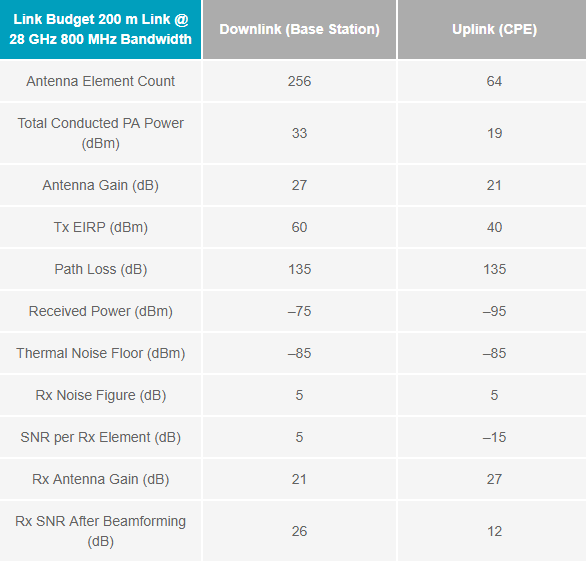It was only a few years ago that the industry was debating the feasibility of using the millimeter wave spectrum for mobile communications and framing the challenges that lay ahead for the radio designer.
However using mmwave and advanced technology like Massive MIMO and Beam-forming, mmWave can compensate the path loss comparing to Sub 6 GHz.
Regarding Link Budget : the below example is taken from Analog.com website

The additional path loss compared to that at cellular frequencies is a major hurdle to overcome at mmWave but blockage (buildings, foliage, people, etc.) is another major factor to consider.
In general, an NLOS scenario should be considered for fixed wireless deployment given the desired reach and terrain being considered.
In this example, a base station with 200 m reach in a suburban deployment. Here It’s assumed a path loss of 135 dB based on an NLOS outdoor to outdoor link.
In this case, 256 elements in the base station and 64 elements in the CPE. In both cases, the output power can be satisfied with silicon implementation.
The link is assumed to be asymmetric, which provides some relief in uplink budget. In this case, the average link quality should allow for 64 QAM operation in the downlink and 16 QAM in the uplink.
The uplink can be improved by increasing the transmit power of the CPE if required, up to the legislated regional limits.
If one were to stretch the link reach to 500 m, the path loss will increase to approximately 150 dB. This is doable, but it makes the radios on both uplink and downlink more complex, and the power consumption will increase dramatically.
